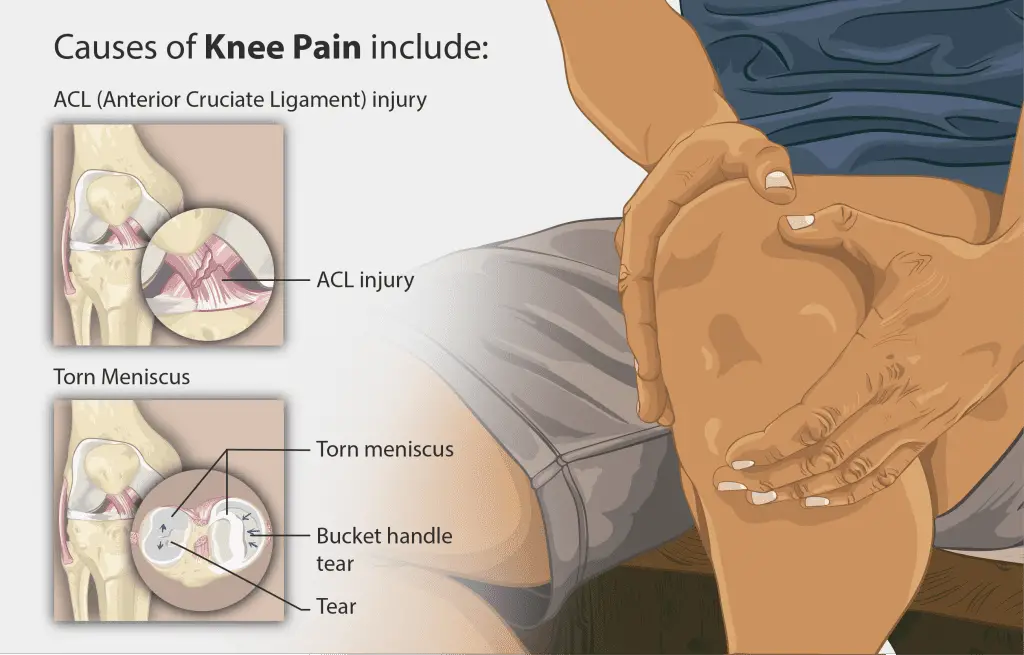If you’re considering an inversion table to help with your back pain, you may be wondering if they’re safe. Can inversion tables hurt your knees?
The short answer is: yes, they can. But only if you use them incorrectly. Inversion tables are designed to put your body into a reverse gravity position, which can help to decompress the spine and take the pressure off of your disks and nerves.
Contents
What is inversion therapy?

Inversion therapy is a type of physical therapy that involves hanging upside down or at an inverted angle while supported by the hips or ankles.
The purpose of inversion therapy is to align the spine and relieve pressure on the discs and nerves.
Inversion therapy has been used for centuries to treat back pain, but recent studies have shown that it may also be effective in treating other conditions such as headaches, osteoarthritis, and knee pain.
One of the most common questions about inversion therapy is whether or not it is safe for the knees. There is no definitive answer, as each individual’s body responds differently to inversion. However, there are some general guidelines that can be followed to minimize the risk of a knee injury.
First, it is important to warm up before inverting, as this will help reduce the risk of strain. Second, people with existing knee problems should consult a doctor before beginning inversion therapy.
Finally, it is important to use caution when inverting and to stop if any pain or discomfort is felt in the knees.
Does research support the benefits of inversion therapy?
Inversion therapy, which involves hanging upside down or at an inverted angle, is often promoted as a treatment for back pain. The theory is that by hanging upside down, the force of gravity pulls your spinal degenerative discs away from your vertebrae, relieving pressure and pain.
Some people also believe that inversion therapy can help improve blood circulation, reduce stress, and increase flexibility.
Although there is some anecdotal evidence that inversion therapy may provide benefits for people with neck pain and back pain, there is little scientific evidence to support these claims. In fact, there is some concern that inversion therapy may actually do more harm than good.
A small number of case reports have suggested that inversion therapy may cause or exacerbate knee pain, especially for people with pre-existing knee conditions such as osteoarthritis.
If you are considering inversion therapy for the treatment of back pain, it is important to speak with your doctor first. Inversion therapy may not be appropriate for everyone, and it is important to understand the potential risks and benefits before starting any new treatment program.
Types of inversion therapy devices and techniques
The aim of inversion therapy is to use gravity to decompress the spine and take pressure off the discs and nerves. This is done by hanging upside down, or being in an upside-down position, for a short period of time.
Inversion tables are the most common type of inversion therapy device. They look like a normal tables, but they have straps that you can attach your ankles to. You start by lying on your back on the table and then strap your ankles in. Once your ankles are secured, you can raise yourself up into an inverted position using a control lever.
Inversion chairs are similar to inversion tables, but they have a padded seat instead of a flat surface. They also usually have handrails to help you balance yourself while you are inverted.
Gravity (inversion) boots are another type of device that can be used for inversion therapy. These boots hang from an elevated surface, such as a bar or doorframe, and allow you to strap your feet into them before inverting yourself.
There are also alternative methods of inversion therapy that do not use any type of device. These methods usually involve hanging from an elevated surface using your hands or wearing specialized clothing that allows you to hang upside down without support.
Risks of inversion therapy
Inversion therapy, a type of treatment that involves hanging upside down or at an inverted angle, is sometimes used to relieve back pain. However, this therapy isn’t for everyone and comes with some risks.
People with the following conditions should not try inversion therapy:
- High blood pressure
- Heart condition
- Glaucoma
- Back or leg fracture
- Osteoporosis
- Hernia
In addition, people who are pregnant or who have had recent surgery should not use inversion therapy.
Frequently Asked Questions
Is an inversion table good for knee pain?
There is no definitive answer to this question as different people will experience different results. Some people may find that using an inversion table helps to relieve their knee pain, while others may not find it to be effective.
Can you get injured using an inversion table?
You can get injured using an inversion table if you do not use it properly or if you have a preexisting condition that contraindicates its use.
Can an inversion table make the pain worse?
There is no one-size-fits-all answer to this question, as the effects of inversion therapy can vary from person to person. Some people may find that inversion tables help to relieve their back pain, while others may find that the pain worsens. If you are considering using an inversion table for back pain relief, it is important to speak to your doctor or physiotherapist first to ensure that it is the right treatment for you.
inversion tables, inversion table, inversion therapy, back pain, high blood pressure, blood pressure, knee pain, inversion table therapy, medical professional, gravitational force, knee replacement, negative side effects, total knee replacements, blood vessels, heart rate, pregnant women, short sessions, multiple times, back problems, inner ear, health benefits, EMG activity, spinal traction, back pain relief, blood thinners, drug administration, key points, necessary precaution, health risks, following health issues, torn, compression stockings, lower back pain, chiropractor, lower back, ACL injury, chiropractic care, anterior cruciate ligament, rehabilitation, total knee arthroplasties, total knee replacements, thrombosis, veins, rhizotomy, venous, fracture

Dave Lee is the founder of Spine Institute NY, a huge fan of inversion therapy, a researcher, and an author.

